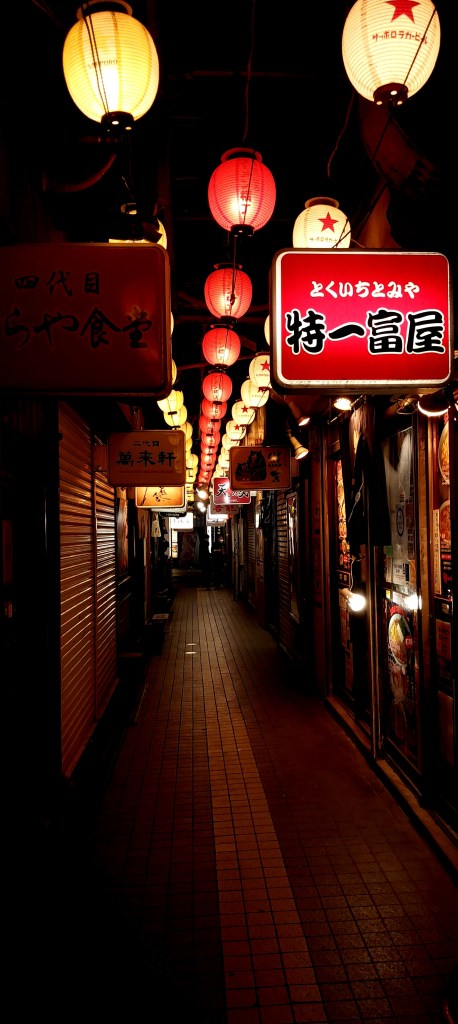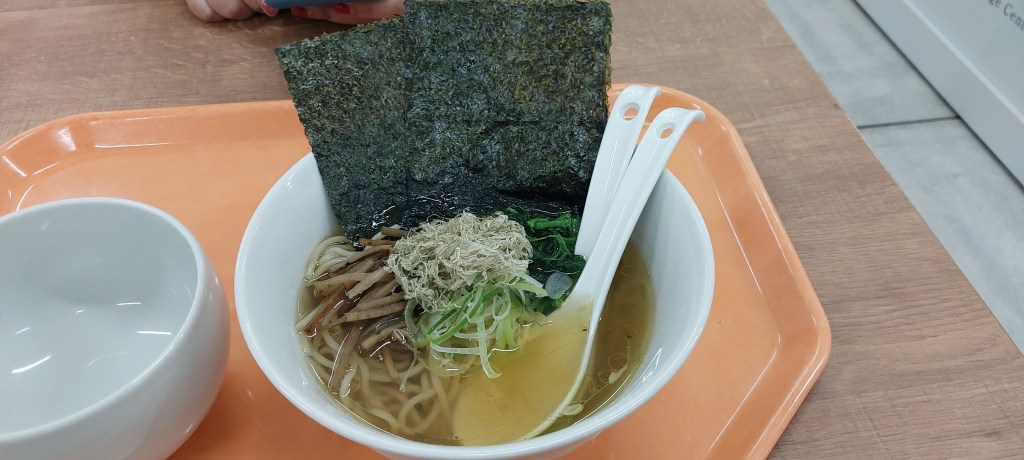My cooking is simply ingredients plus うまみ / Umami
Nobuyuki Matsuhisa san, celebrity chef specialising in Japanese delicacies
One of the most critical levers to explore a culture is – Food. And this blog post is one in a series of blog posts exposing you to the plethora of food varieties Japan has to offer. And I am barely scratching the surface.
Another aim of this blog post is to dispel some of the myths around Japanese foods. While there is a fair share of criticisms, in my opinion, those are quite minor and may not prove to be a dealbreaker by a long shot. So without further ado (as I am a bit impatient and hungry when writing about food), let’s get started.
いただきます / Itadakimasu / Bon Apetit
The Fifth Dimension of Taste
We are all familiar of the 4 dimensions of taste identifiable by the human tongue. Those are:
- Sweet
- Salt
- Sour
- Bitter
However, there is an additional dimension of taste, the fifth dimension, which is called うまみ / Umami.
Umami was proved as the new dimension of taste by Prof. Kikunae Ikeda of Tokyo Imperial University in 1908 CE through his extensive research on the subject. Umami, in my opinion, is best described as some meaty yet extremely flavourful and smooth taste. Some chemicals like MSG (Mono-sodium glutamate) can impart umami taste to foods to some extent. However, such sensory impulses or stimuli are best described through in-person experience.
And that’s where Japan, or more specifically, Hokkaido, has the ace in the game.
Hokkaido is the Food Capital of Japan in my opinion. This and the other blogs in this series will explain why.
Oh, and did I say that Hokkaido is the Ramen Powerhouse of Japan?
Experience the うまみ / Umami yourself
Let me tell you my experience of dishes high on the umami content, spread across several parts of Hokkaido.
Venue 1: The Ramen Alley in Susukino, Sapporo
The Susukino district in Sapporo is famous for nightlife of Sapporo and is a very happening place post sunset. I would recommend it for party lovers (which I am not being a classic introvert).
However, what I liked in Susukino is the Ramen Alley – a street full of quaint shops specialising for years what is the signature dish of Sapporo – The Legendary Miso Ramen.

The Ramen Alley is very close to the Susukino Metro Station and lies at about 5 minute walking distance from the Metro Station.
And needless to say, I tried Miso Ramen over here, as I heard that Sapporo and in particular the Ramen Alley, is the birthplace of the legendary Miso Ramen.
A quick word on Ramen. The Ramen is basically a comforting noodle based soupy meal, a traditional food of Japan. In Hokkaido, there are 3 major variants of ramen available:
- みそらめん / Miso Ramen: The signature dish of Sapporo, filled with rich and cloudy だし / dashi soup
- しおらめん / Shio Ramen: A clear dashi based ramen rich in umami content, found commonly in the coastal areas of Hokkaido, in particular, Hakodate.
- しょゆらめん / Shoyu Ramen: A dark, soy-sauce based dashi, common throughout Hokkaido
And needless to say, I tried the Miso Ramen in the Ramen Alley.

The version of Miso Ramen I had contained cloudy and rich dashi consisting of chicken and pork soup and vegetables cooked for more than 10 hours. The serving also contained corn, spring onions, pork and boiled eggs. The ramen itself was grown using local wheat sourced from Hokkaido. This ramen can be enjoyed more with a dash of wasabi sauce and black pepper. Moderate in umami content but highly flavourful. The meal was indeed comforting and warm and I could feel it for perhaps the very first time in my life as I was subjected to negative temperature in Sapporo a short while ago. I could understand why miso ramen played an important role in Hokkaido comsidering the frigid temperature prevalent there for most of the year. I was a bit hesitant initially due to eggs present in the soup, but I trusted the chef’s experience. And it did pay off, handsomely.
Venue 2: Men-Eiji, Noboribetsu
This is where I had my rendezvous with Shio Ramen.
Noboribetsu is an idyllic coastal town cum an active volcanic site in Japan. And the best of both these worlds did combine harmoniously, culminating in a product that has perhaps the highest umami content of all foods – こんぶ (konbu) / Kelp.
This is where one can find the contrasts or paradoxes harmoniously existing in Japan. The volcano, though destructive, brings with itself ash and lava which are extremely fertile and fertilise even the seafloor, giving rise to kelp with superlative umami content and meaty texture. It has been said that the Emperor himself liked the dashi made of konbu from Hokkaido and requested such dashi to be served daily.

The green strips shown here is the legendary konbu or kelp. Even the ramen contains konbu which imparts it a distinct greenish hue.
The dashi may be made from chicken, pork, fish or even vegetables, which make it an ideal choice for vegetarian travelers. One may choose to add meat or remove it altogether. I however, preferred the traditional chicken, kelp and pork broth.
And the umami content is simply irresistible. So much so that I was hell bent on having another ramen had it not been for my train whose arrival forced me to restrain my hands. A healthy and fiendishly flavourful dish, high in umami content, perfect for vegetarians as well. And needless to say I lost some weight thanks to such healthy and delectable foods.
Venue 3: Food Court, Upopoy Ainu National Museum, Shiraoi
Over here, my quest for “Eat Local, Buy Local” went overdrive and I decided to give myself a free hand while trying healthy local foods. And I had a rendezvous with うどん / udon for the very first time.


The base ingredient this time for both the udon and ramen was Allium ochotense, a type of native onion species found commonly in the Northernmost reaches of the Pacific Island Chain like Hokkaido (Japan), Far Eastern Russia and Alaska (USA). Though this is onion, yet, it has a distinct garlic like pungency which amplifies the umami quotient.
And the local vegetables grown in Shiraoi are perfect add-ons to both the dishes. The udon, however, though healthy due to it being made of buckwheat, is yet a bit thick. However, both these dishes are super healthy and flavourful and contain an assortment of vegetables, making them ideal for vegetarians. Do ask the chef not to add meat though if you are a vegetarian.
Eat Local, Buy Local, Be a Sustainable Traveler
Among the various tenets of traveling places, I do follow the aforesaid principle strictly.
Our travels should help local businesses, local companies, local eateries and local manufacturing. It helps presevre a large portion of the local culture, generate income for locals, and gives us a new perspective of local lifestyle and culture. Which means our travels should help make local businesses sustainable.
Before buying products, I always check the country or region of origin of the products. I try to eat whatever is locally produced as much as possible, and as much as it aligns with my food-choices. Maybe it helps local farmers. Maybe it helps preserve time tested yet unknown foods of the local people.
I prefer traveling by public transport, Metros and trains as far as possible. I am a train nerd for sure. But it goes without saying that trains are the best in class transport option available in terms of lowering of emissions while traveling, even better than electric vehicles.
More of these in a separate post, but yes, this is what I believe in and am proud to contribute to. It’s satisfying for the mind, body and soul.
Thank you for being patiently there supporting my content and being aware of sustainable traveling. Hope it helped dispel some myths around Japanese food as being suitable only for non-vegetarians as I showed delectable vegetarian options as well.
More content to come up soon. Appreciate your comments.
ありがとうございます / Arigatou Gozaimasu
© Abirbhav Mukherjee. All the pictures / videos posted in this article are my own unless otherwise mentioned.

My mouth is salivating at the thought of Ramen and all food Japanese!
LikeLiked by 1 person
I concur.. Need to re-visit Japan and have some more Ramen.. 🇯🇵
LikeLike
Perfect! My daughter loves ramen! I want to visit Sapporo in the winter for the skiing, and this sounds like an amazing place to eat and enjoy the flavors.
I too am an introvert, so I’ll leave the nightlife to the young extroverts.
LikeLiked by 1 person
Well, I am also an introvert and an adventure seeker, so you can count me in for that skiing trip of yours, though I can be a bit clumsy initially.. 😛
Coming to ramen, good that your daughter likes it.. No amount of ramen is enough for me, and I believe I can say this for your daughter.. You will love it too, especially during winters.. 🙂
By the way, Sapporo (or Hokkaido for that matter) is the Food Capital of Japan.. Surprise, Variety and Perfection are the norm here.. 🙂
LikeLiked by 1 person
What? Sapporo for food and snow??? Ideal 🙂
LikeLiked by 1 person
Kanpai / Cheers 😊
LikeLiked by 1 person
I am a ramen addict. Umami is basically due to a compound discovered by Japan Kyoto University in the 90s. It is the unique chemical reaction of combining proteins and soy sauce.
LikeLiked by 1 person
Nice to meet you and great to know that you are a “ramen-addict”.. No amount of ramen feels adequate.. Good to know about the science behind umami.. Thank you for your visit and comment.. 🙂
LikeLike
I’ve always liked udon and it’s only lately I came to appreciate ramen. Now I just cannot get enough
LikeLiked by 1 person
Wow.. Great to know that you like both udon and ramen.. where did you have those in Japan?
And yes, I share your thoughts on the availability.. Can’t get enough of ramen..
LikeLike
We visited Japan . But really enjoyed eating so much food..and so delicious.
Let’s follow our. Anita
LikeLiked by 1 person
Thank you for your comment.. 🙂 much appreciated..
Glad to know you visited Japan.. I look forward to reading your blog posts on Japan and hear about your experiences .. 🙂
I am already following your blog.. Thank you for following mine.. Abir
LikeLike
Can you follow my blog?
LikeLiked by 1 person
I am already following
LikeLike
Is it months ago?
LikeLike
Maybe.. It was long back..
LikeLike
Ok
LikeLiked by 1 person
Wow I have never read something so in depth about ramen, how fascinating.. I didn’t realise Hokkaido was a place for
such good food and fancy a road called Ramen Alley haha. I would go for the Shoyu Ramen as I prefer to
stick to
pescatarian or vegetarian diet when traveling so no chicken or pork or beef etc. Thanks for these tips I am
bookmarking it if I ever head in that direction!
LikeLiked by 1 person
Thank you so much for your visit and comment.. Though difficult, yet, one can still get vegetarian ramen options, which is what I felt in Hokkaido.. 🙂
Btw, this is just the first article in the series.. Hokkaido is the Food Capital of Japan and more articles are coming up on Food.. ☺️
LikeLiked by 1 person